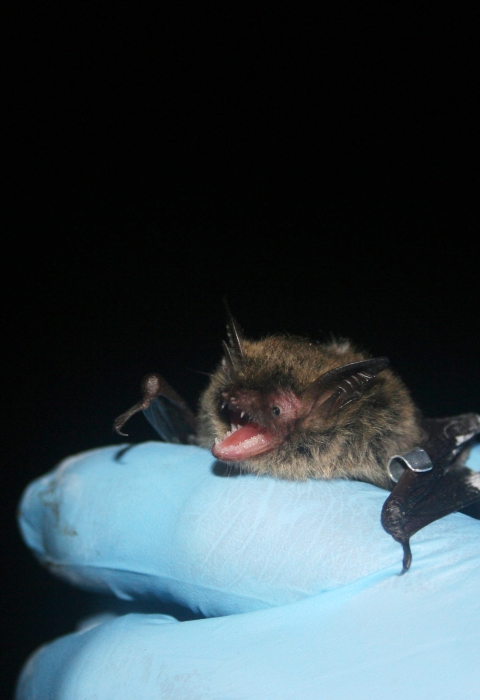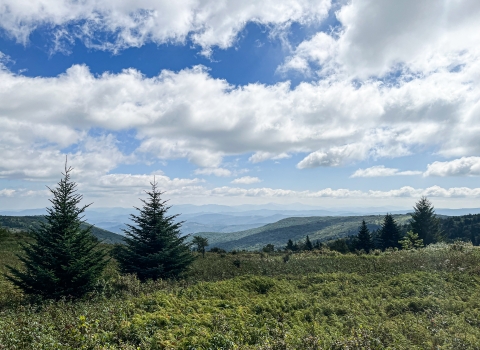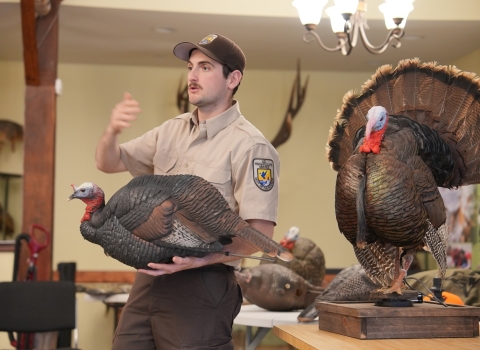In October, some people turn to movies for scary thrills. Many films portray bats as nefarious little creatures whose bite turns normal people into vampires and causes all other kinds of havoc.
That’s in the movies. In real life, bats are more helpful than hurtful.
“Bats are often misunderstood animals,” said Tyler Hern, supervisory fish biologist at Erwin National Fish Hatchery in Tennessee. “They provide incredibly valuable ecological and economic services for the environment and the American people.”
Bats are the ecosystem’s pest control service. They eat pesky insects that impact agricultural crops, fruit orchards and other plants. Moths and beetles are some of bats’ favorite foods -- the steak and potatoes of the bat world. And, they’ll definitely go for mosquitoes. Some bats eat fruit and help distribute seeds, resulting in further growth. Some pollinate plants, which lead to a variety of humans’ favorites, including chocolate, coffee, and agave – that key ingredient in tequila.
To help counter myths and pop-culture portrayals, Hern and his staff teamed up with the U.S. Fish and Wildlife Service’s Tennessee Ecological Services Field Office, Tennessee Wildlife Resources Agency and East Tennessee State University. Local citizens participated in a bat netting survey and discussed imperiled species, learning more about the role bats play in local human communities. Through a variety of engaging educational programs and partnerships, the hatchery promotes understanding and conservation of bats.
“Erwin supports the Service’s mission in many ways,” Hern said. “For bats, specifically, we work with partners to identify what species are utilizing Service land, raise awareness about imperiled bat species in our area through public outreach and support recovery directly through habitat improvements, like providing artificial roosts.”
The Northern long-eared bat is one of 16 bat species in Tennessee. The endangered mammal is found in 36 other states as well. Its population is declining severely. One reason is because of a disease known as white-nose syndrome. It impacts the productivity of these consumers of insects and ultimately the quality of life for humans. Other challenges include residential and commercial development that don't promote conservation, manipulation of forested habitats where bat parents raise their newborn pups and climate changes that alter conditions within hibernation caves.
This is why Hern and his staff highlight the benefits of bats. Some folks may hear “fish hatchery” and think all they do is raise and release fish. The facility in Erwin – and the other 70 national fish hatcheries around the country – do much more.
In addition to imperiled species education and surveys, the staff in Erwin propagate freshwater mussels and conduct aquatic surveys. They grow patches of native plants for other pollinators; visit schools, sharing info about trout; and distribute approximately 18 million trout eggs to state, federal and Tribal hatcheries around the country each year. Hern and fellow biologists build partnerships and relationships to create a legacy of conservation that stretches beyond the boundaries of the hatchery.
“There’s a lot more to fish hatcheries than just rearing fish,” said Hern. “We are one piece of the Service engine that delivers conservation actions through our collective skills and working with others around the country. This bat educational event is just one way we, along with our partners, promote conservation from a fish hatchery in a non-traditional way.”




